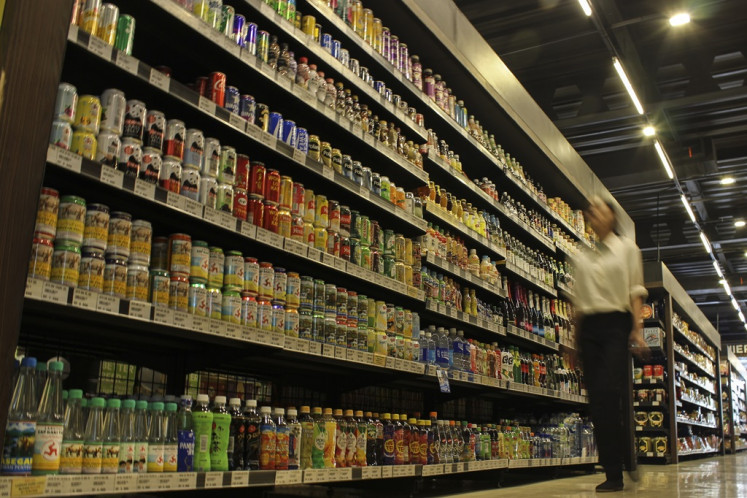Popular Reads
Top Results
Can't find what you're looking for?
View all search resultsPopular Reads
Top Results
Can't find what you're looking for?
View all search resultsGreen buildings key in strengthening our resilience to climate change
In fact, 10 percent of global carbon emissions are a result of the manufacturing of building materials such as steel, cement, and glass, as well as construction and demolition of buildings.
Change text size
Gift Premium Articles
to Anyone
T
he highly anticipated UN Intergovernmental Panel on Climate Change (IPCC) report delivered stark warning on climate change, sounding “code red for humanity”. The report, published in August, noted that with further global warming, every region across the globe is projected to increasingly experience concurrent and multiple changes as the different types of climate change take effect.
Indeed, we have already witnessed a series of extreme weather events in recent months – from Hurricane Ida in the United States, severe flooding in Western Europe, to the record-breaking rainfall in China’s Henan province. Closer to home, we are deeply saddened to see the devastating impact of the flash floods and landslides in April this year.
Despite the gloom, scientists pointed out in the IPCC report that if we can halve global emissions by 2030 and reach net zero emissions by 2050, it is possible to limit the rise of global temperatures to the internationally-agreed threshold of 1.5 degrees Celsius.
For that to happen, decisive, urgent, and concerted actions need to be taken now to make our planet, people, and economies more resilient to climate change.
According to the International Energy Agency (IEA), the buildings and construction sector accounted for 38 percent of total global energy-related carbon dioxide emissions in 2019. As the world population grows and becomes increasingly urbanized, building stock is expected to double by 2050 according to the World Green Building Council, further increasing the sector’s impact on climate change.
It is clear that a shift in the sector is needed – and today, we are starting to see this take place with the planning and development of green buildings around the world. As the term suggests, a green building is one that is built with the aim of preserving our climate and the natural environment. As much as possible, such buildings also seek to improve the quality of our lives through the likes of using materials that are sustainable and non-toxic, and providing a healthy indoor environment.
Indonesia, as one of the largest emitters of greenhouse gases globally, is making good progress in greening its buildings. It has introduced green building standards for its major cities, while setting a target to decrease energy intensity of buildings by 1 percent per year to 2025.
Most recently, Indonesia has also updated its nationally determined contribution (NDC). Apart from confirming its first NDC from 2016 of reducing carbon emissions by 29-41 percent by 2030, it has taken account ocean and marine issues in its emissions strategy. The authorities have also updated the country’s net-zero target date from 2070 to 2060.
However, as humanity is urged to race to net zero, more can, and must, be done.
Carbon emissions are released not only when buildings are fully operational. In fact, 10 percent of global carbon emissions are a result of the manufacturing of building materials such as steel, cement, and glass, as well as construction and demolition of buildings. Hence, a holistic approach needs to be taken to reduce carbon emissions across the whole lifecycle of buildings, including in its design, materials production, logistics and construction processes.
Modular approach presents the industry a possibility to manage construction in a more sustainable manner. This method of construction involves producing standardized components of a structure in an off-site factory, then assembling them on-site. Besides the significant acceleration of project timelines, this approach leads to higher resource efficiency during production and remarkable reduction of waste and site disturbance compared with traditional site-built structures.
The importance of innovation cannot be stressed enough as we navigate towards a more resilient future. There is a huge untapped potential when it comes to innovating to create energy and water savings in buildings.
For example, pumps control the water and cooling system of a building, operating, and using energy year-round. Particularly in commercial buildings, the heating, ventilation, and air conditioning (HVAC) systems accounts for up to 40 percent total energy use, according to a 2013 study by the Australia Department of Industry, Science, Energy and Resources.
With more efficient pump solutions, the world’s energy consumption can be heavily reduced. The result of which is not only a positive impact on carbon emissions and climate change but also higher performing buildings, greater indoor comfort, and increased water safety.
In line with innovation, proper policy and regulatory support is also critical in encouraging the transition into a more resilient built environment in cities of the future.
Rating schemes for buildings have increasingly been implemented in recent years. Laying out minimum requirements for water reuse, energy efficiency and comfort, these schemes are an important policy lever that can provide regular feedback about the energy and water efficiency of individual buildings. It also serves to inform whether progress is being made towards the broader buildings sectors’ efficiency improvements and carbon footprint reduction.
From homes to offices, schools to hospitals, buildings play an integral role in our everyday life. As we strive to build back better from the COVID-19 pandemic, this week’s World Green Building Week on Sept. 20-24 reminds us the key role the buildings and construction sector plays in strengthening our resilience to climate change and beyond. It is also a platform for us to reflect, learn, and to lead the change.
Indonesia has great potential to up its game in building resilience, so does the buildings and construction sector. By taking bold action on climate change collectively, we will create a more sustainable future for generations to come.
***
The writer is regional managing director Asia Pacific-Commercial Buildings, Grundfos.










